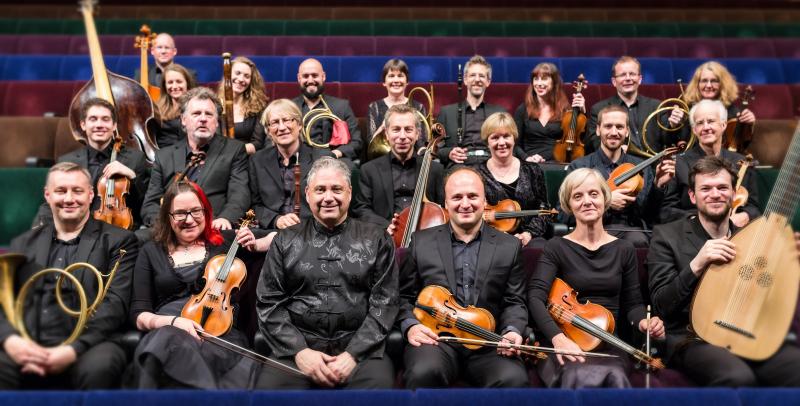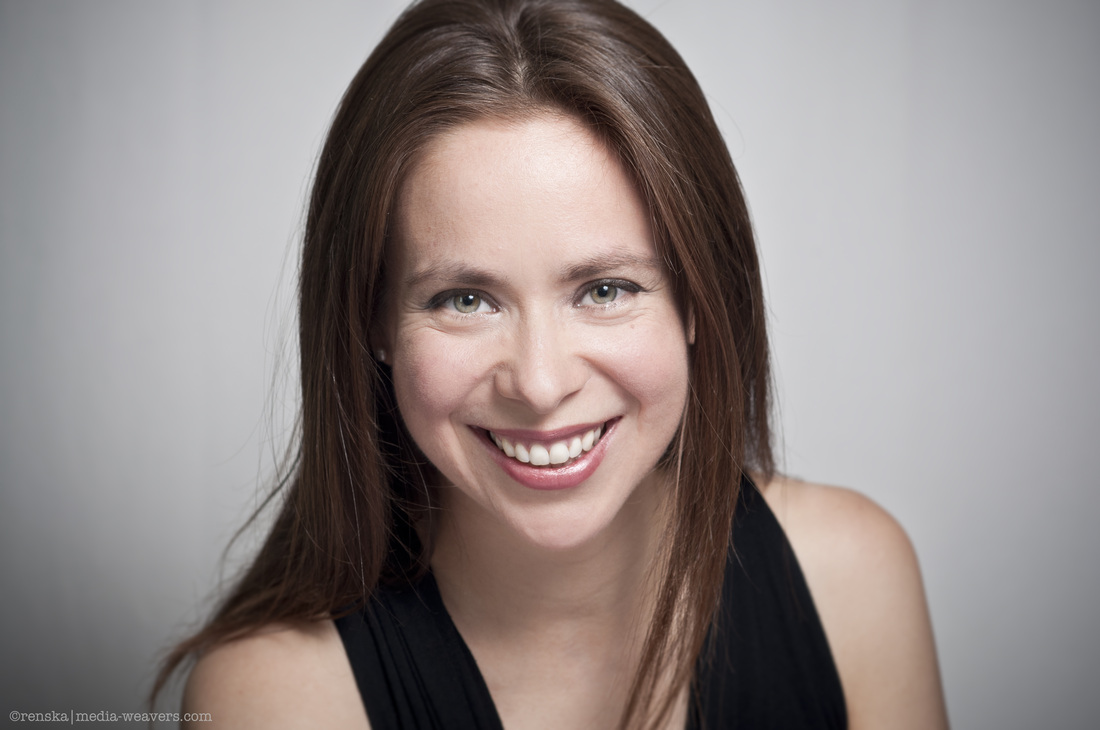Fry, AAM, Egarr, Barbican review – revival and revolution | reviews, news & interviews
Fry, AAM, Egarr, Barbican review – revival and revolution
Fry, AAM, Egarr, Barbican review – revival and revolution
The will of the people writ large in Beethoven’s music for the barricades

Second performances are even more valuable than premieres, composers say, when it comes to launching a piece into the world. Spare a thought, then, for Jan Ladislav Dussek, who has had to wait over two centuries for this prize to be awarded to his Mass in G – really, a Missa solemnis – of a scale to rival Beethoven’s example.
Like Beethoven, Dussek was a composer primarily for and at the piano. He flourished as a touring virtuoso through the cultural capitals of Europe – which in those days included St Petersburg – turning out showpiece concertos and up-to-the-minute crowdpleasers such as “The Naval Battle and Total Defeat of the Dutch Fleet by Admiral Duncan” which doubtless went down a storm with London audiences in 1797.
The Mass, as you might expect, raises its gaze to higher things. Dussek wasn’t a fervent believer, but he applied all his art and craft to following in the footsteps of Haydn, Beethoven and Hummel when commissioned by Prince Nicolaus of Esterhazy to produce a Mass honouring his wife’s name-day. The 15-minute opening Kyrie gives notice of Dussek’s ambition to outstrip them all. It’s a typically volatile work in time and temperament. Monumental Baroque cadences sit cheek by jowl with modulations that would make Beethoven blush, yet the Mass is no tatterdemalion assemblage: this is the sound of Dussek more familiar from his always bold and trend-setting piano sonatas. He could have taught Berlioz a thing or two about outlandish orchestration, such as the architectural elements of flute, viola and double-bass in the Christe, building space from sound.
Not unlike other oddball Czechs such as Zelenka and Reicha, Dussek is an impatient gardener, hardly waiting for one idea to take root and bloom before digging it up and flourishing another, though upward rushing semiquaver scales in the solo writing form something of a leitmotif – Dussek’s right hand hard at work on the keyboard – and the Mass comes briefly to rest on a lovely soprano aria planted in the middle of the Credo, with florid writing owing something to the heroines of the Mozart/da Ponte trilogy, channelled into a stream of contemplation anticipating late Schubert and winningly sung on the night by Stefanie True (pictured below). Helen Charlston, Gwilym Bowen and Morgan Pearse completed a well-matched quartet of soloists. Egarr’s direction accentuated and occasionally exaggerated Dussek’s high contrasts of colour and dynamic. Before the hour was up, we had perhaps had enough and more than enough of attention-grabbing accents and horn blasts like exclamation marks. Even so, such devices belong to an endearingly rustic tradition of Czech Mass writing, with four-square sign-offs – that’s all, folks – which show the dissolute and cosmopolitan Dussek returning to his roots one last time.
Helen Charlston, Gwilym Bowen and Morgan Pearse completed a well-matched quartet of soloists. Egarr’s direction accentuated and occasionally exaggerated Dussek’s high contrasts of colour and dynamic. Before the hour was up, we had perhaps had enough and more than enough of attention-grabbing accents and horn blasts like exclamation marks. Even so, such devices belong to an endearingly rustic tradition of Czech Mass writing, with four-square sign-offs – that’s all, folks – which show the dissolute and cosmopolitan Dussek returning to his roots one last time.
Dussek’s Mass had eaten up the lion’s share of rehearsal time to judge from some tentative entries and scrappy playing in the second half. Full marks to the AAM for enterprise, however: scarcely more than a handful of the audience can have encountered Beethoven’s music for Egmont beyond the overture. Now, with the 250th anniversary of his birth around the corner, is a perfect time to revive the lot, all 45 minutes of songs and entr’actes. The subject itself never grows old. Two centuries on there remains no more powerful musical declaration of freedom in the teeth of oppression than Beethoven’s response to Goethe’s play. Chen Reiss sang prettily, first dashing and then lovelorn as the girl who has won the Dutch nobleman’s heart, hinting at the trouser-role defiance and passion that would achieve full expression in Beethoven’s only completed opera, which was in the process of transition from Leonore to Fidelio as he wrote up Egmont in 1810.
Once Beethoven’s music had become more in demand than Goethe’s play, first Friedrich Mosengeil and then Franz Grillparzer (a favoured poet of Schubert) devised a poetic paraphrase. On this occasion Stephen Fry delivered an uncredited English narration based on Grillparzer, setting the scene in Brussels before filling in the story of Egmont’s defiance of his Spanish overlords and eventual execution. He struck the right, confiding tone, by and large, though a little cautious when speaking over the orchestra in the melodrama which finds Egmont cast into a dungeon (in another echo of Fidelio) and stopping short of the oratorical fervour finally demanded as the hero meets his fate and exhorts his countrymen to rise up in revolution. It was rather the AAM who met Beethoven at the barricades with playing of raw and unbridled passion.
rating
Share this article
Add comment
The future of Arts Journalism
You can stop theartsdesk.com closing!
We urgently need financing to survive. Our fundraising drive has thus far raised £49,000 but we need to reach £100,000 or we will be forced to close. Please contribute here: https://gofund.me/c3f6033d
And if you can forward this information to anyone who might assist, we’d be grateful.

Subscribe to theartsdesk.com
Thank you for continuing to read our work on theartsdesk.com. For unlimited access to every article in its entirety, including our archive of more than 15,000 pieces, we're asking for £5 per month or £40 per year. We feel it's a very good deal, and hope you do too.
To take a subscription now simply click here.
And if you're looking for that extra gift for a friend or family member, why not treat them to a theartsdesk.com gift subscription?
more Classical music
 Solomon, OAE, Butt, QEH review - daft Biblical whitewashing with great choruses
Even a top soprano and mezzo can’t make this Handel paean wholly convincing
Solomon, OAE, Butt, QEH review - daft Biblical whitewashing with great choruses
Even a top soprano and mezzo can’t make this Handel paean wholly convincing
 Two-Piano Gala, Kings Place review - shining constellations
London Piano Festival curators and illustrious friends entertain and enlighten
Two-Piano Gala, Kings Place review - shining constellations
London Piano Festival curators and illustrious friends entertain and enlighten
 Echo Vocal Ensemble, Latto, Union Chapel review - eclectic choral programme garlanded with dance
Beautiful singing at the heart of an imaginative and stylistically varied concert
Echo Vocal Ensemble, Latto, Union Chapel review - eclectic choral programme garlanded with dance
Beautiful singing at the heart of an imaginative and stylistically varied concert
 Scott, Irish Baroque Orchestra, Whelan, RIAM, Dublin review - towards a Mozart masterpiece
Characteristic joy and enlightenment from this team, but a valveless horn brings problems
Scott, Irish Baroque Orchestra, Whelan, RIAM, Dublin review - towards a Mozart masterpiece
Characteristic joy and enlightenment from this team, but a valveless horn brings problems
 Classical CDs: Voice flutes, flugelhorns and froth
Baroque sonatas, English orchestral music and an emotionally-charged vocal recital
Classical CDs: Voice flutes, flugelhorns and froth
Baroque sonatas, English orchestral music and an emotionally-charged vocal recital
 Kanneh-Mason, Britten Sinfonia, Shave, Milton Court - a grin and a big beaming smile
A pair of striking contemporary pieces alongside two old favourites
Kanneh-Mason, Britten Sinfonia, Shave, Milton Court - a grin and a big beaming smile
A pair of striking contemporary pieces alongside two old favourites
 theartsdesk at the New Ross Piano Festival - Finghin Collins’ musical rainbow
From revelatory Bach played with astounding maturity by a 22 year old to four-hand jazz
theartsdesk at the New Ross Piano Festival - Finghin Collins’ musical rainbow
From revelatory Bach played with astounding maturity by a 22 year old to four-hand jazz
 First Person: Manchester Camerata's Head of Artistic Planning Clara Marshall Cawley on questioning the status quo
Five days of free events with all sorts of audiences around Manchester starts tomorrow
First Person: Manchester Camerata's Head of Artistic Planning Clara Marshall Cawley on questioning the status quo
Five days of free events with all sorts of audiences around Manchester starts tomorrow
 Goldscheider, Brother Tree Sound, Kings Place review - music of hope from a young composer
Unusual combination of horn, strings and electronics makes for some intriguing listening
Goldscheider, Brother Tree Sound, Kings Place review - music of hope from a young composer
Unusual combination of horn, strings and electronics makes for some intriguing listening
 theartsdesk Q&A: composer Donghoon Shin on his new concerto for pianist Seong-Jin Cho
Classical music makes its debut at London's K-Music Festival
theartsdesk Q&A: composer Donghoon Shin on his new concerto for pianist Seong-Jin Cho
Classical music makes its debut at London's K-Music Festival

Comments
Did you see when that piece